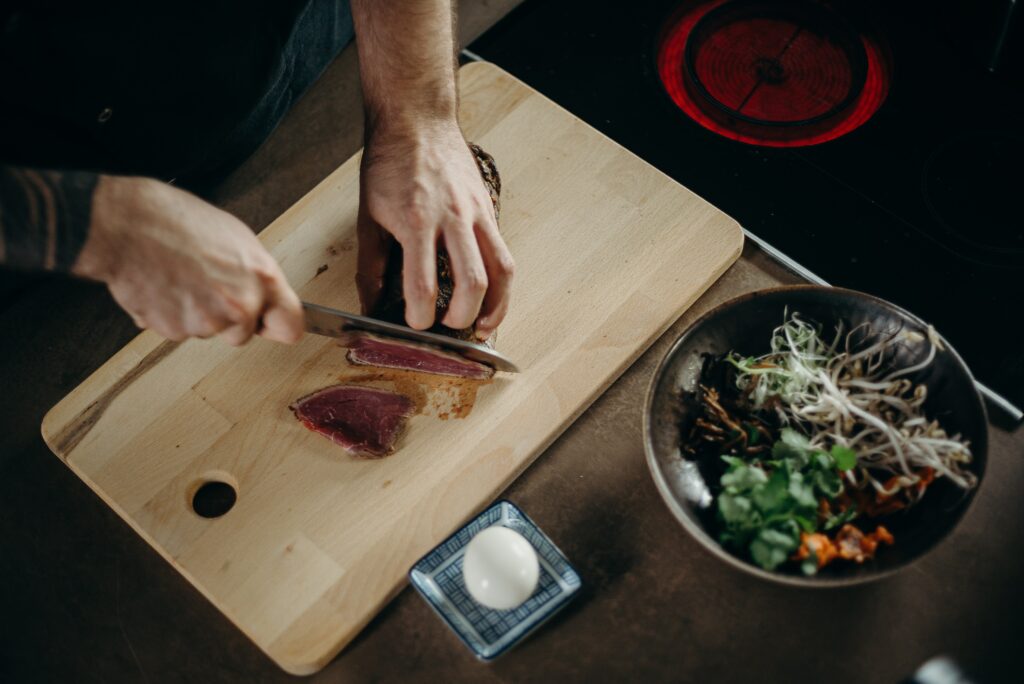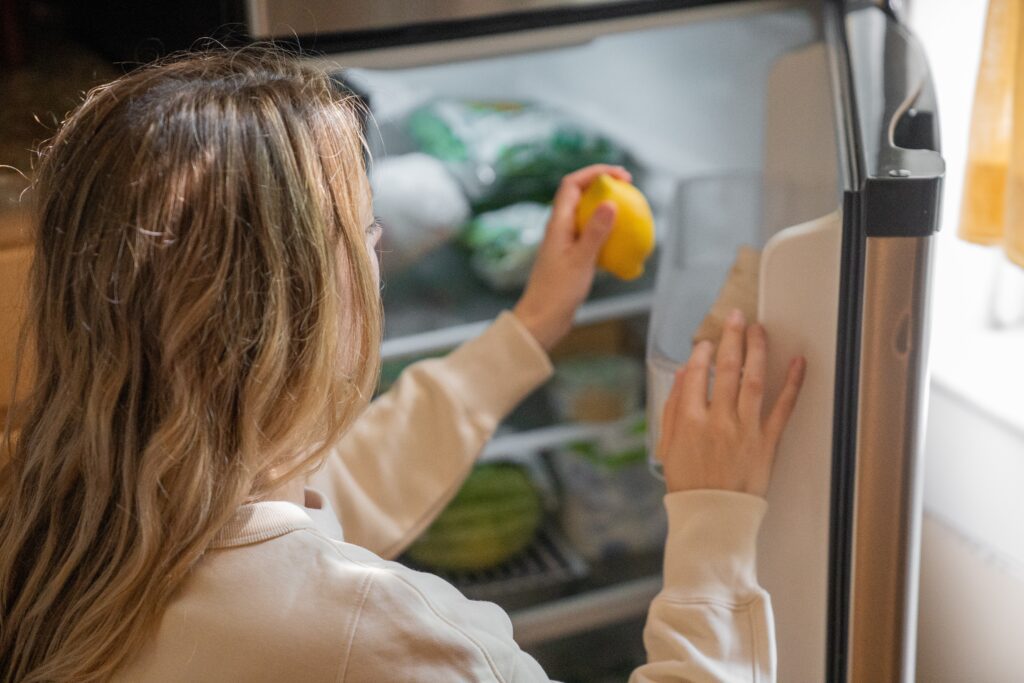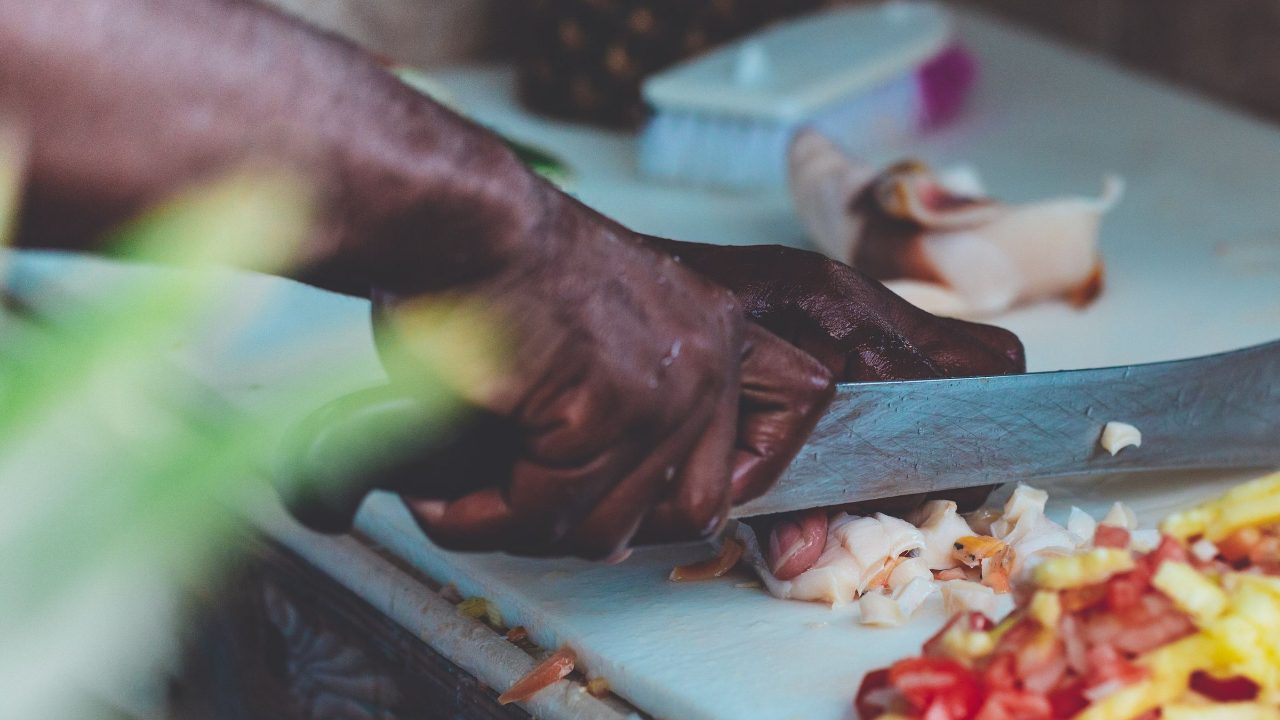Let’s imagine a situation in which the cook is slicing food on a cutting board. However, this board was used to prepare other food before, and was not properly sanitized. Therefore, situations like this can cause food contamination. This process is called cross-contamination.
Cross-contamination occurs when, due to the lack of hygiene of kitchen utensils, food, or even the worker’s lack of personal hygiene, contaminants are transferred from one contaminated being, food or object to another food.
Understand now in detail about cross-contamination, how it occurs and how to avoid it.
Our minds are like our stomaches; they are whetted by the change of their food, and variety supplies both with fresh appetite.
-Quintiliano
Jump To Section
Cross-Contamination
You can also watch this and other exclusive GA Originals on YouTube.
Microbiological contamination is the spread of harmful microorganisms to foods that do not naturally contain these microorganisms.
They can be present naturally or get into food through a carrier. Carriers are people or things carrying microorganisms that can end up in food that’s not handled safely. Because microorganisms are so small, they can’t be seen with the naked eye and can be on people and objects without you knowing it.
People can transfer germs they have into the food they’re preparing. A person can have an infection without showing any symptoms or signs. In fact, we’re constantly carrying some germs around. Feeling well doesn’t necessarily mean you don’t have any microorganisms in your body. People can also pick up microorganisms from one type of food and transfer them to another if they don’t handle the food safely.
Chemicals can also get into food by accident through cross-contamination. If a cleaning product is spilled on the kitchen countertop and no one cleans the area for food preparation, it can end up on food and contaminate someone.
Therefore, Cross-contamination is the unintentional transfer of microorganisms, chemical contaminants (including allergens), or any foreign substance from food, person, or object to another food product.
How Does Cross-Contamination Happen?

- Food to Food
Raw food or juices come in contact with ready-to-eat food.
- Equipment to Food
The same equipment is used with raw and ready-to-eat food
without cleaning in between.
- People to Food
Hands that have touched raw food then touch ready-to-eat
food without being washed in between
Avoiding Cross-Contamination

- Refrigerate Correctly
- Keep raw meat, poultry, and seafood on the lower shelves. Cooked and ready-to-eat foods are on the upper shelves to prevent cross-contamination.
- Raw fruits, vegetables, and foods will be reheated in the center.
- All stored food must be covered to avoid cross-contamination with spills or liquids from other foods.
- Safe Practices
- Wash your hands when starting cooking, changing tasks, and before and after using the washroom.
- In self-service restaurants, food on display should never be mixed with new batches. In this way, any contaminants that may have entered the old food are prevented from coming into contact with the food that will be replaced.
- Sneeze guards should always be used as they serve as shields between a person’s face and the food on display.
- Store cleaning materials and other chemicals separately from food products.
- Use Equipment and Tools Correctly
- Cooking equipment and utensils, such as cutting boards and knives, should be handled separately from others when preparing raw meats and washed, rinsed, and sanitized before being reused.
- It is common in some restaurants to use cutting boards and knives with color-coded handles. For example, yellow is for poultry processing, blue is for fish and seafood, and red is for meat.
- Wooden cutting boards are entry doors and colonies of bacteria due to their microscopic cracks making cleaning difficult.
- When tasting food, use a disposable spoon and never with your fingers.
Bottom Line
Every cook should be able to identify a potential cross-contamination situation and prevent it from happening.
These actions will significantly reduce the risk of food poisoning.
Did you like this article?
I hope this article has helped you understand how cross-contamination works. To learn more, take a look at, Is It Safe To Wash Meat Before Cooking?
Leave a comment below and share our content.
Help our community grow by following our social media on Spotify, Instagram, Facebook, Youtube, and Tiktok. And stay up to date with the news from the world of Gastronomy.
Don’t forget to tag @gastrovinoacademy on Instagram and hashtag it #gastrovinoacademy.
Cheers 🍷


